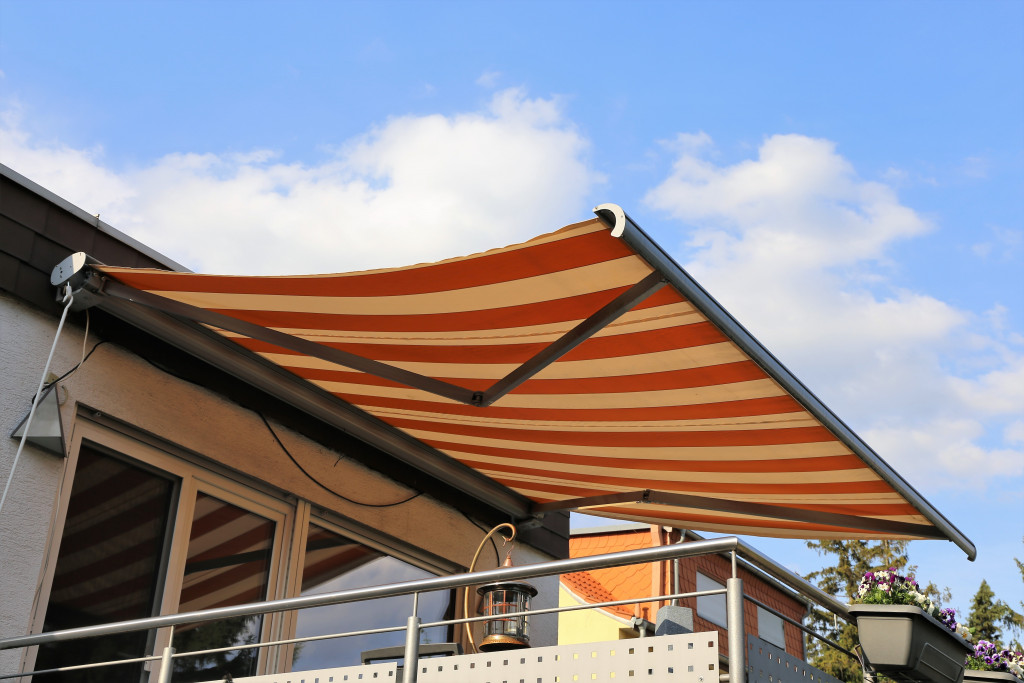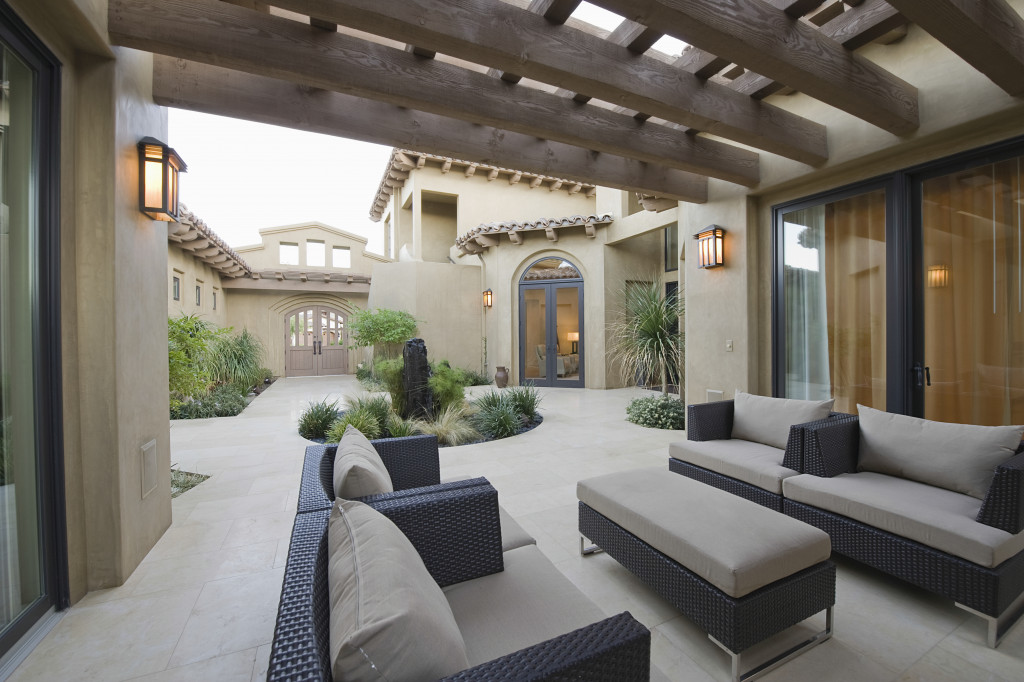Summer is the perfect time to enjoy the outdoors, but bad weather can often ruin your plans. Whether it’s a sudden downpour or oppressive heat, you don’t have to let the elements dictate when you can and can’t enjoy your outdoor living area. With a little preparation, you can create a comfortable space no matter what Mother Nature throws your way.
When most people think of summer weatherproofing their homes, they focus on the windows and doors. But don’t forget about your outdoor living areas! These spaces are often left exposed to the elements, which can lead to damage if they’re not properly cared for. By taking some simple precautions, you can keep your outdoor living area in tip-top shape all season long.
Here are a few tips for protecting your outdoor living area from the summer elements:
Cover up.
If you have furniture or accessories in your outdoor living area, cover them up when they’re not in use. This will protect them from sun damage, rain damage, and more. There are a variety of covers available for everything from patio furniture to grills, so you’re sure to find one that fits your needs.
There are a few different options when it comes to protecting furniture in your outdoor living area from the elements. You can use patio furniture covers, plastic tarps, or blankets.
- If you choose to use patio furniture covers, make sure they are made of waterproof and breathable material. This will help prevent moisture from building up and causing damage to the furniture.
- If you use plastic tarps, secure them tightly, so the wind doesn’t blow them away. Also, ensure plenty of ventilation so that moisture can escape.
- If you choose to use blankets, cover all the furniture and ensure they are tucked in tightly so that they don’t fly away in the wind.
You can also put a waterproof coating on the existing deck to protect it from harsh weather. The coating can also enhance the overall look of the home’s outdoor living area.
Install awnings or shades.
Installing awnings or shades can provide many benefits for your outdoor living area. They can help protect against the elements, such as wind and rain, and can also help keep your furniture and other belongings from fading due to the sun’s heat. Awnings and shades can also provide some privacy if you need them.
Awnings and shades also help keep your home cool by blocking out some of the heat. When choosing an awning or shade, be sure to pick one that’s durable and weatherproof. You’ll also want to ensure it’s the right size for your outdoor living area.
Installing awnings or shades can be a simple do-it-yourself project, or you can hire someone to do it for you. Either way, it’s essential to ensure they are installed correctly to provide the maximum benefit for your home.

Add foliage.
Plants are not only aesthetically pleasing but can also help protect your outdoor living area from the elements. Tall plants can act as windbreaks, while large umbrella-like leaves can provide shade and protection from the rain.
Plants can also provide shade for furniture and keep it cool. Some good plants for this purpose are tall shrubs or trees, which can form a natural barrier around the furniture. Bushes and vines can also be draped over furniture to provide protection. You should choose plants native to your area, so they require minimal maintenance and care.
Aside from the furniture, plants also keep your outdoor living area cool. In the summer, they can provide a natural shade, and in the winter, they can help block the wind. They can also help regulate the temperature in your outdoor living area, making it more comfortable to spend time in.
Invest in quality materials.
When creating an outdoor living area, it’s crucial to invest in quality materials that protect against the elements. Choosing sturdy materials such as treated lumber ensures that your deck or patio will last for years. Proper roofing and flashing can help keep your home’s exterior in good condition, even during bad weather.
For example, opt for furniture made with powder-coated aluminum or all-weather wicker instead of wood or plastic. And if you’re adding any type of flooring, choose materials like stone or concrete that won’t be damaged by moisture or sunlight.
Create multiple levels of protection.
If you want to go above and beyond in protecting your outdoor living area, create multiple levels of protection against the elements. For example, you might have an awning over your patio, add some plants for extra shading, and add an outdoor rug or carpet for additional comfort. Creating multiple layers of protection ensures that your outdoor living space is always comfortable, no matter what the weather brings.
By taking some simple precautions, you can keep your outdoor living area in tip-top shape all season long. With a bit of forethought, you can create an oasis in your backyard that you can enjoy no matter what the weather brings.

